❥ Having The Courage To Create
A literary survival kit for anyone on the verge of making something.
With Café Isolde, I hope to anchor my aspirations with one powerful mantra: Have the courage to create. Pretty sweet and straightforward, everything I long for stems from this—or so I believed—until I realized that having the courage to create also translates into having the courage to show your work—or, in today's digital vernacular, to share your work. And therein lies the hitch.
At times, the act of creating can feel incredibly vulnerable. Our ego, ever the protector, urges us to tuck our ideas away, to safeguard them, or to shield them from scrutiny in the most dramatic of ways (this hits very close to home, personally). But this instinct, meant to protect us, can smother us just as easily. It keeps our ideas in a perpetual gestation period, never fully formed, never fully alive. As I settle into the rhythm of sharing, I've been pleasantly surprised to find that what I once perceived as a daunting fork in the road is nothing more than a chasm mysteriously bridged by a series of inevitable mental gymnastics and the slow, steady practice of allowing myself to be fully seen.
I often pause and wonder how I got to this point—how I managed to override my brain's instinct to self-censor and transform that into a constant flow of hyper-creativity, bursting at the seams with ideas while maintaining a profound desire to connect and stay vulnerable. At the same time, I’m still learning to prioritize consistency over perfectionism. While it may seem ordinary, a significant part of the creative process is accepting that not everything we create will be brilliant. Understanding that even the most uninspired act of creation falls within the spectrum of creativity is paramount. The real challenge isn't about achieving perfection but rather about bridging the gap between doing nothing and doing something.
The First Perfume Bottle as Art Piece: Le Roy Soleil, 1946— A masterpiece that captures not just a scent, but a moment in history—this dazzling collaboration between Salvador Dalí and Elsa Schiaparelli, was created in the wake of World War II. The exquisite perfume bottle symbolizes the triumphant return of light and hope. Housed in a stunning Baccarat crystal vessel, its design is a breathtaking blend of Surrealism and royal elegance. Rolling ocean waves cradle a radiant gilded sun, a tribute to Louis XIV, the illustrious Sun King—a figure of unmatched power and brilliance. Adding to the bottle’s allure is a magnificent scallop shell, echoing Botticelli’s 'The Birth of Venus'. This signature motif from Dalí not only represents beauty but also embodies the themes of rebirth and divine femininity. And the fragrance itself? An opulent concoction designed to envelop you in warmth and brilliance, evoking emotions as rich as its history.
Among the bottle's devoted admirers was none other than Wallis Simpson, the Duchess of Windsor. She cherished her bottle so much that it took pride of place on her vanity, even overshadowing a photograph of the Duke of Windsor. With only 2,000 bottles ever crafted, 'Le Roy Soleil' is not just a fragrance; it’s a rare artifact of beauty and artistry, where scent transforms into a true work of art.My mind refuses to let go of the idea that, in helping someone else, I'm also helping myself, and in doing so, I will do what I do best: make a list. Over the past few years, a handful of books have cracked me open, shifted my perspective, and rewired my thinking in ways I could have never predicted. These books—alongside therapy (which, let's be honest, is the ultimate way to hack creativity)—have helped me close in on the ever-present bottomless pit between hesitation and action. I physically own these books. I return to them often. And in the spirit of vulnerability and sharing, I want to pass them on to you. Consider this a literary survival kit for anyone on the verge of making something— But seriously, do not skip therapy.
#1 — The Artist’s Way, Julia Cameron. If you pick up just one book from this collection, let it be The Artist’s Way. But fair warning—it’s not a casual read. You must be consistent for this book to truly spark a creative breakthrough. Like anything worthwhile, it requires a substantial degree of commitment. What makes The Artist’s Way so powerful is Julia Cameron’s ability to entertain two simple yet transformative tools: Morning Pages and what she calls Artist Dates. Morning Pages—a daily, stream-of-consciousness writing practice—helped me clear mental clutter and tap into more profound creative ideas. Artist Dates—a weekly solo outing designed to nurture inspiration—became a sacred ritual, reminding me that creativity thrives when we make space for it.
I first discovered the book in the summer of 2021 while living in a sunlit Brooklyn apartment I’d booked on Airbnb in the heart of Williamsburg. My host was an unforgettable Argentinian woman who had been in the neighborhood since the early 90s—one of those effortlessly magnetic people you only meet in New York. As it turns out, she was also the founder of Fe Knits, a brand that crafts exquisite, one-of-a-kind sweaters and accessories from 100% silk and mohair. Each piece is handmade in New York, honoring time, tradition, and the art of slow fashion. She introduced me to this book between our conversations about life, creativity, and the rituals that keep it alive. And let’s say—it changed the game for me.
Dear Coque, If you're reading this: I'm infinitely thankful! In writing my weekly entries I have quickly realized that it really is all about the friends you make along the way.
#2 — The Creative Act: A Way of Being, Rick Rubin. If you've ever felt a creative spark weltering just beneath the surface, ‘The Creative Act: A Way of Being’ by Rick Rubin is the nudge you need. A thoughtful Christmas gift from my brother and his wife in 2023, this book quickly became a must-read for me. My big takeaway? Creativity isn't something to chase—it's about how we exist. Rubin flips the script, showing that creative energy surrounds us, waiting to be acknowledged. By shifting your focus from productivity to presence, creativity becomes a natural part of everyday life rather than another task to conquer. Embrace the idea that it's less about doing and more about being, and watch the world unfold as the ultimate canvas that it is.
#3 — Atlas Of The Heart, Brené Brown. If you, like me, have ever rewritten an email ten times before hitting send or abandoned a project because it wasn’t perfect (but really, just because it wasn’t safe), then Atlas of the Heart might be the permission slip you need. I often let perfectionism slow me down—rewriting, overthinking, and stalling instead of just creating. Brené Brown unpacks how perfectionism isn’t about high standards—it’s a fear-driven armor we wear to dodge shame, criticism, and the unbearable thought of not being enough. But in trying to outrun imperfection, we also outrun creativity, connection, and joy. This book makes a compelling case for self-compassion, reminding us that true courage isn’t in getting it all right but in showing up as we are—messy, real, and wonderfully unfinished. It is a manifesto for anyone learning to trade control for growth and fear for freedom. Overall, this book is an excellent encyclopedia and tool to connect with the accurate language needed to name our emotions and acknowledge them as they come.
#4 — Show Your Work! Austin Kleon. I had heard about the book ‘Steal Like an Artist’ for years but never got around to reading it—until I came across ‘Show Your Work!’ in a typical 2020s manner: it was recommended on TikTok by Liz Fox Roseberry. She happens to be the sister of Daniel Roseberry, the Creative Director at Schiaparelli, and her passionate encouragement for creatives to pick up a copy caught my attention. Running her own small jewelry business on Etsy, she demonstrates that creativity is not merely a random spark but a methodical process, something her family seems to have truly mastered. Kleon's book echoes this idea: creativity involves sharing your work, engaging with others, and building a community in public rather than hoarding your ideas in silence. It’s a must-read for anyone who, just like I have, has ever felt hesitant to put their work out there.
❥ Liz puts together fascinating mystery trios for her shop, and last year, I finally managed to snag one. Inside, I found a stunning pair of her pearl Saturn earring jackets, and I’ve been completely enamored ever since. An experience that felt incredibly serendipitous. I'm wearing her designs below.
#5 — Pure Color, Sheila Heti. This is one of my favorite sci-fi novels in recent years, although calling it sci-fi feels almost too limited for what it truly is. It serves as an existential, practically metaphysical meditation on art, love, and the experience of being alive, all filtered through the strange and wondrous lens of a world that functions as God’s first draft. The novel explores what it means to create and examines what it means to be created—to be shaped by love, grief, and time, always unfinished and perpetually in flux.
Heti categorizes people into three archetypes: birds (critics and observers), fish (community-driven and collective-minded), and bears (deeply feeling and intimate creators). As creatives in the online space, we navigate all three roles: we watch, share, and create. In this process, we often question whether we are crafting something meaningful or merely contributing to the noise. The book presents sci-fi in a way that feels more dreamlike than typical genre fiction, unfolding as a series of abstract, shimmering reflections on the purpose of art.
Heti suggests that this world—much like a rough sketch—is not the final version, and neither are we. Perhaps the most comforting takeaway for any artist who shares their work online is that imperfection is not failure but part of the drafting process. And maybe, just maybe, we are all still being revised into something better.
#BonusRead — Trick Mirror, Jia Tolentino. When I first read this book in 2019, the author’s essays on the internet and self-optimization felt sharp and prescient—almost uncomfortably so. Revisiting them now, they seem downright prophetic. She dissects how the online world distorts our sense of self, transforming identity into a performance and making productivity feel like a moral obligation. The pressure to be constantly visible, perpetually improving, and always marketable has only intensified since the book’s release, making her observations more relevant than ever. Tolentino doesn’t provide easy solutions, but she doesn’t need to—her brilliance lies in capturing the contradictions we all feel but struggle to articulate. Trick Mirror remains essential for anyone navigating a world that demands we package ourselves for consumption.
If Dalí and Schiaparelli could bring ‘Le Roy Soleil’ to life in the aftermath of World War II, then waiting for that elusive perfect moment to create is a luxury we simply can no longer afford. Creativity isn't about biding our time for when everything aligns perfectly because, let's face it, that moment will never arrive. It’s about taking that bold leap forward, even when we feel incomplete or uncertain, and allowing ourselves to create regardless. Each book in this collection captures that spirit in its own unique way. Brené Brown shows us that perfectionism is fear dressed up in a clever disguise, while Austin Kleon encourages us to share our work before we feel entirely prepared. Sheila Heti offers a reassuring reminder that, at our core, we are all works in progress. In the meantime, Jia Tolentino highlights how the internet can amplify our self-doubt while also connecting us to a broader community of creators.
The parallel I draw from these explorations is a shared courage to create in the face of adversity. These books are more than just words on a page—they are essential tools, lifelines, guiding us across the challenging turmoil of navigating the urge to create and the fear that holds us back. They cross that divide, no matter how imperfectly or slowly, and remind us that the journey of creation shapes who we are just as much as the final product does.
Here’s to having the courage to create!
❥ All book images photographed by me.


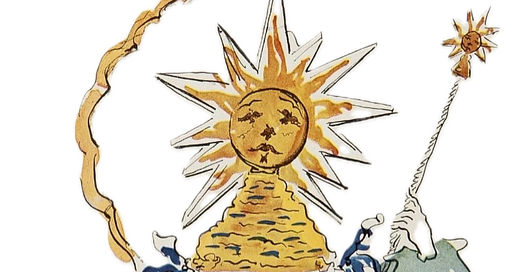



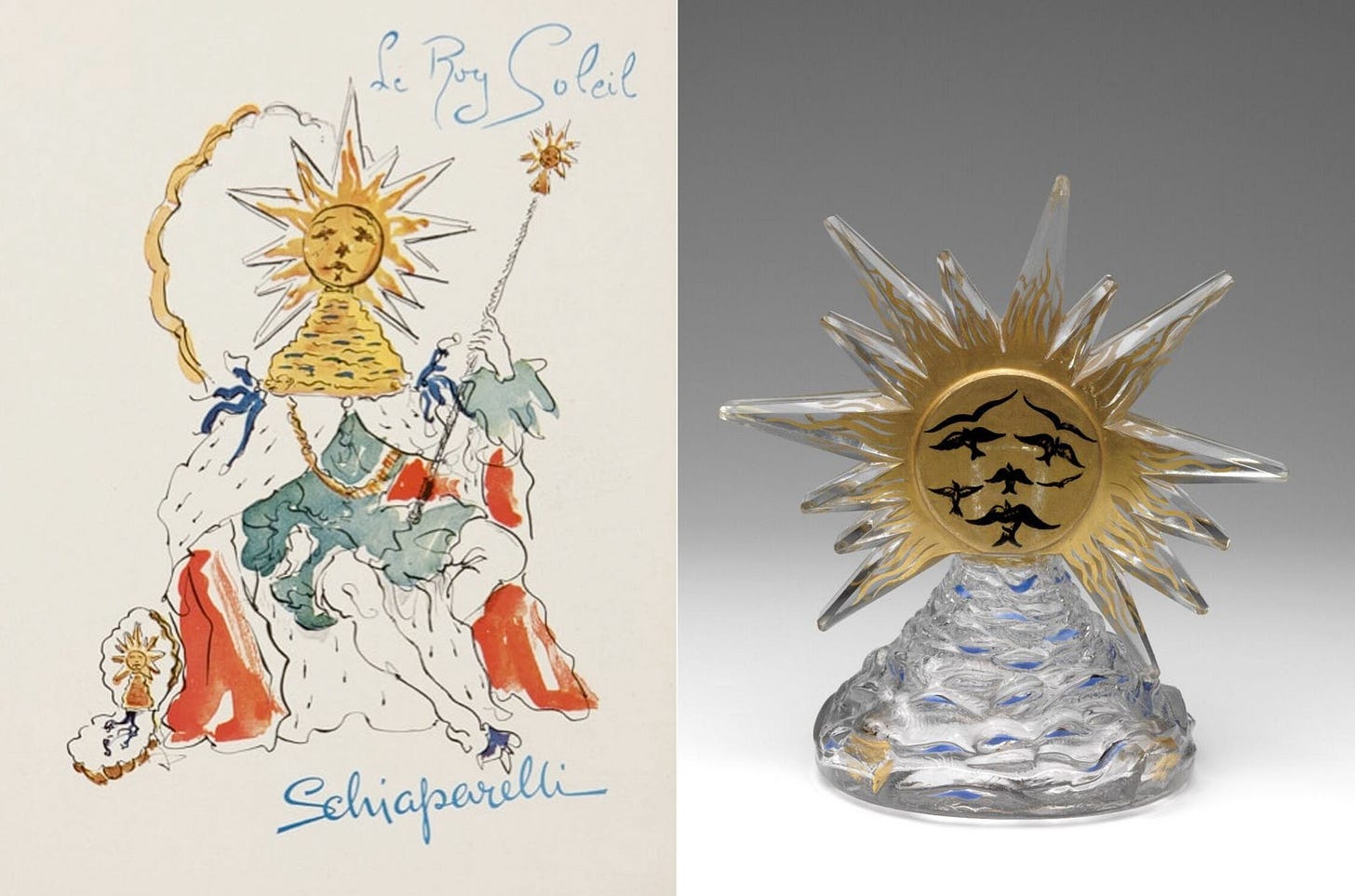
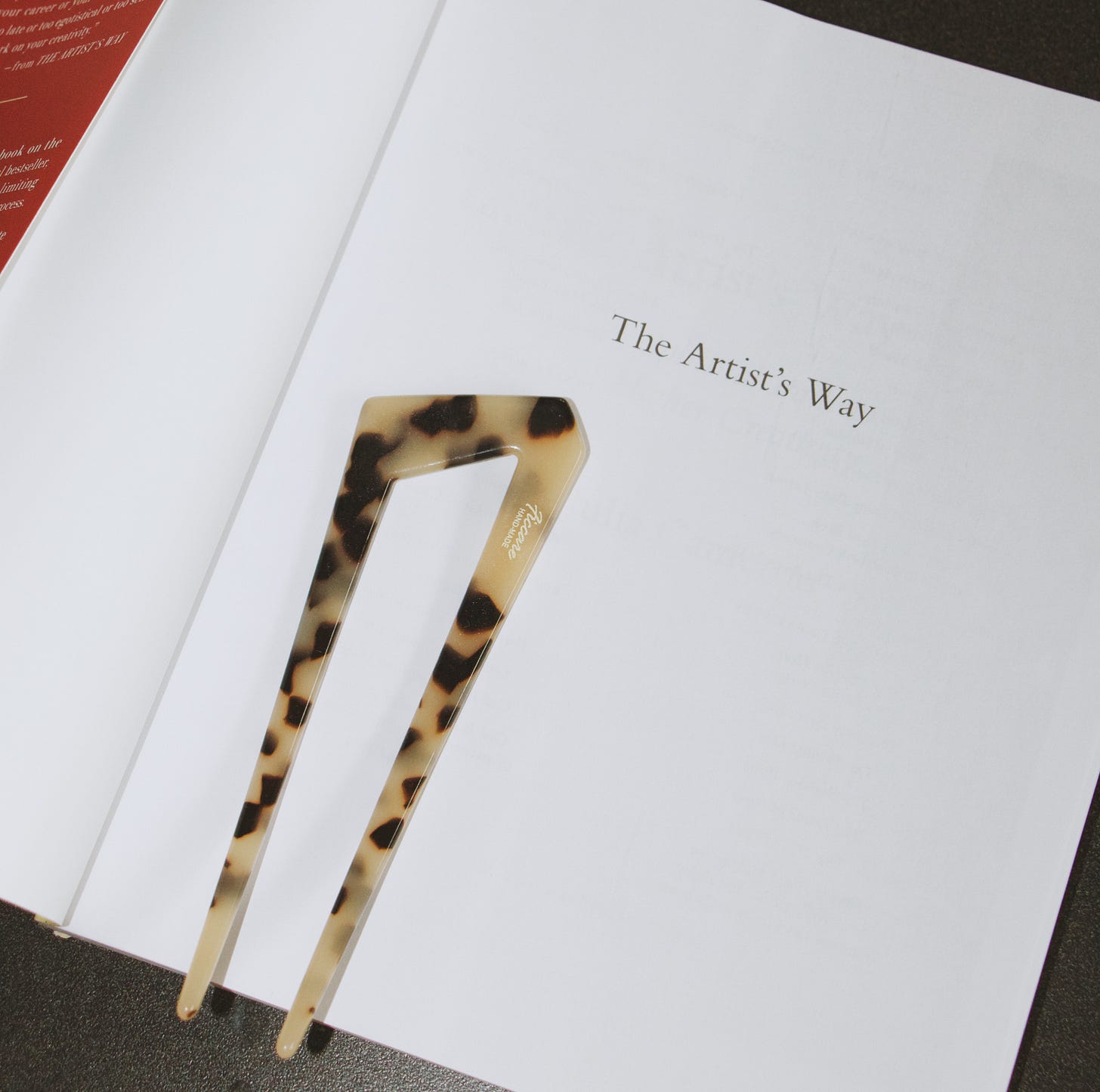
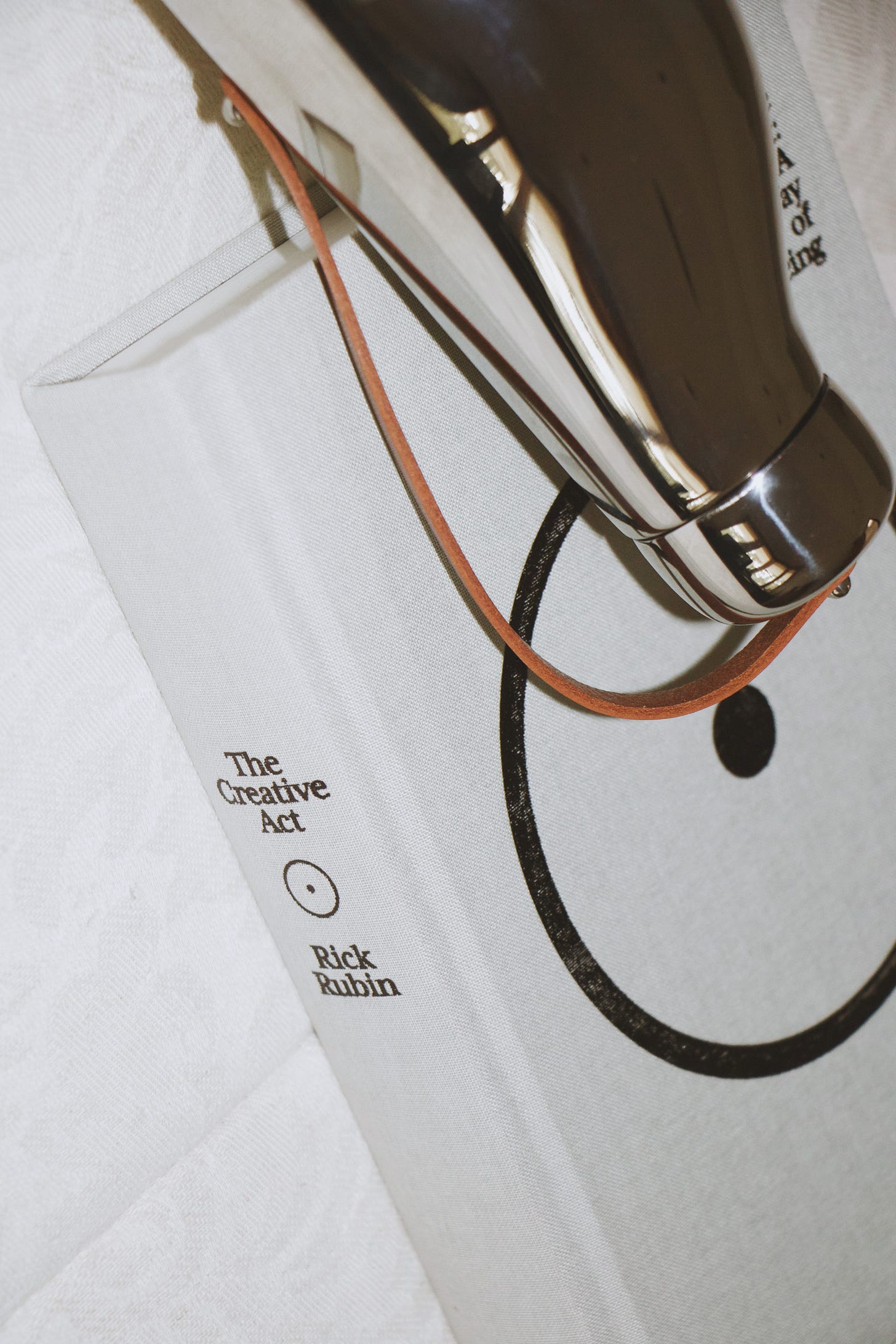
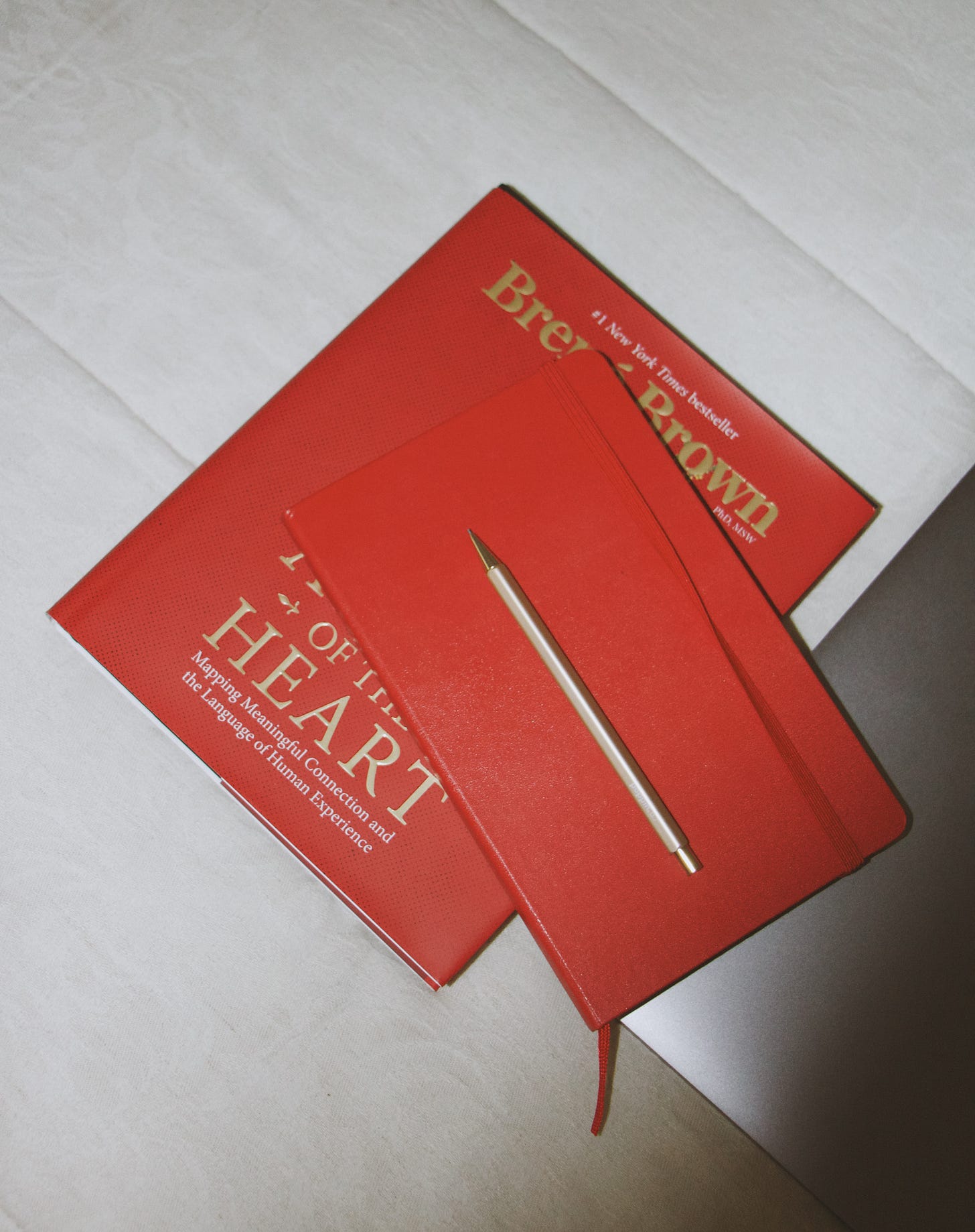
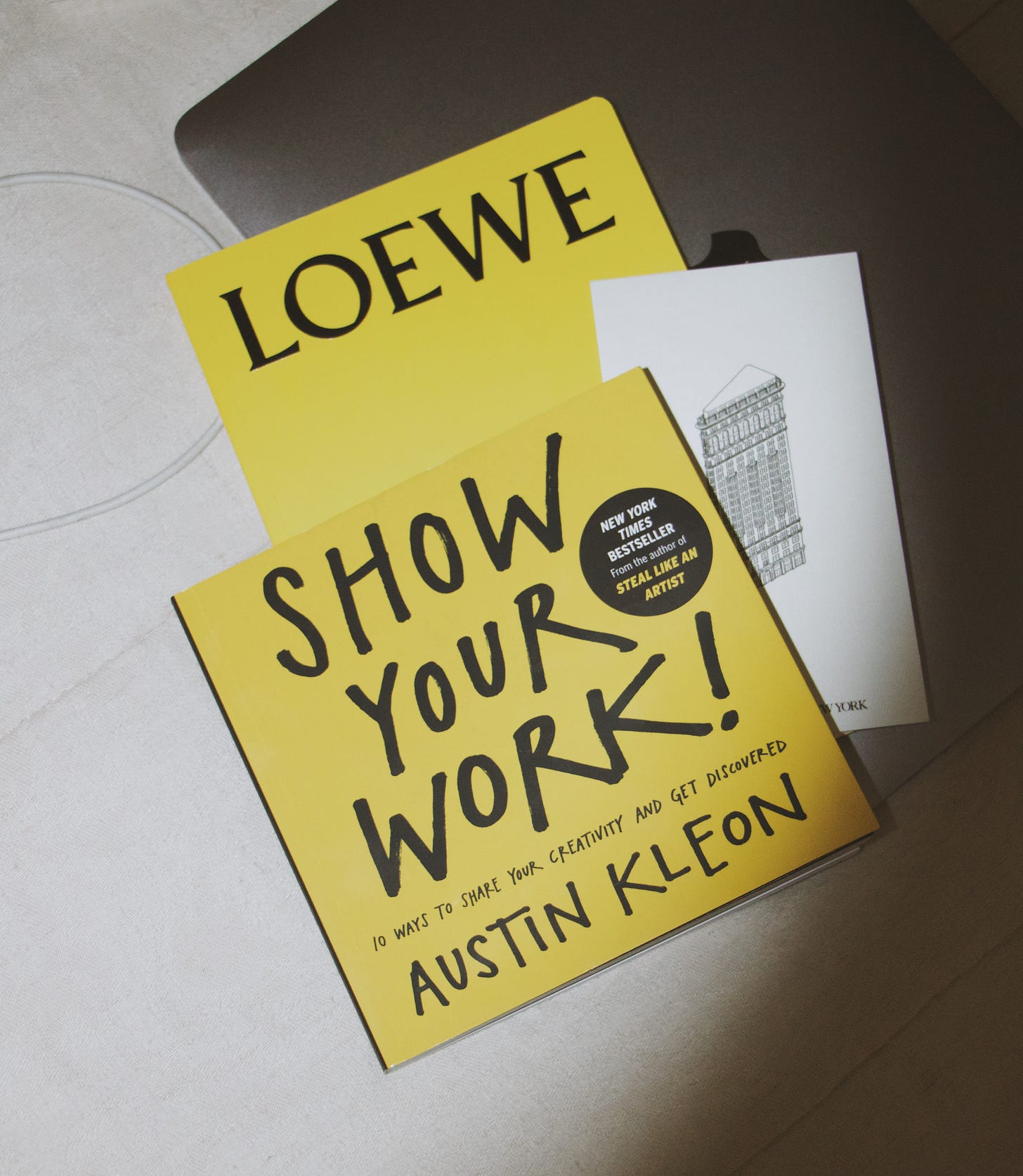

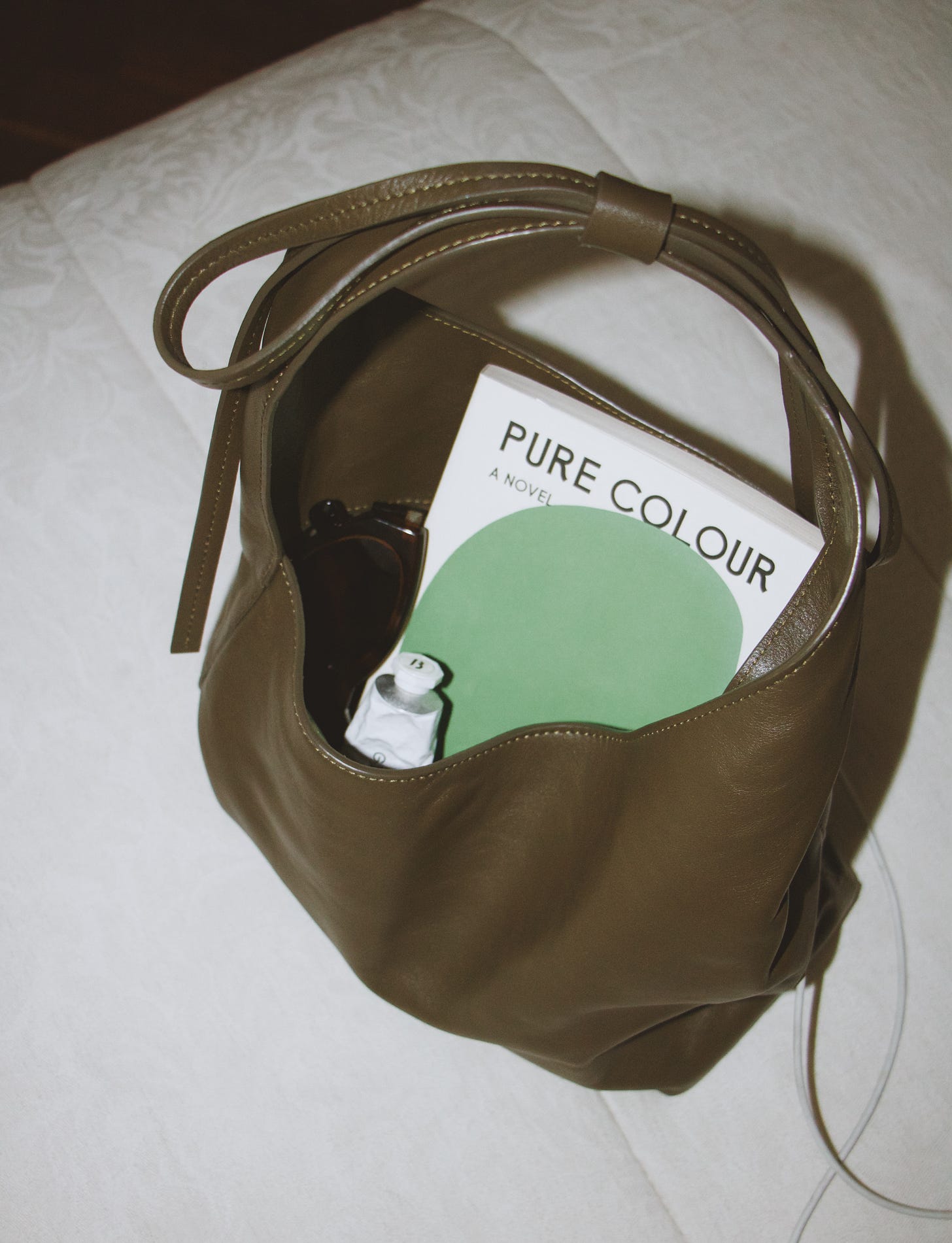
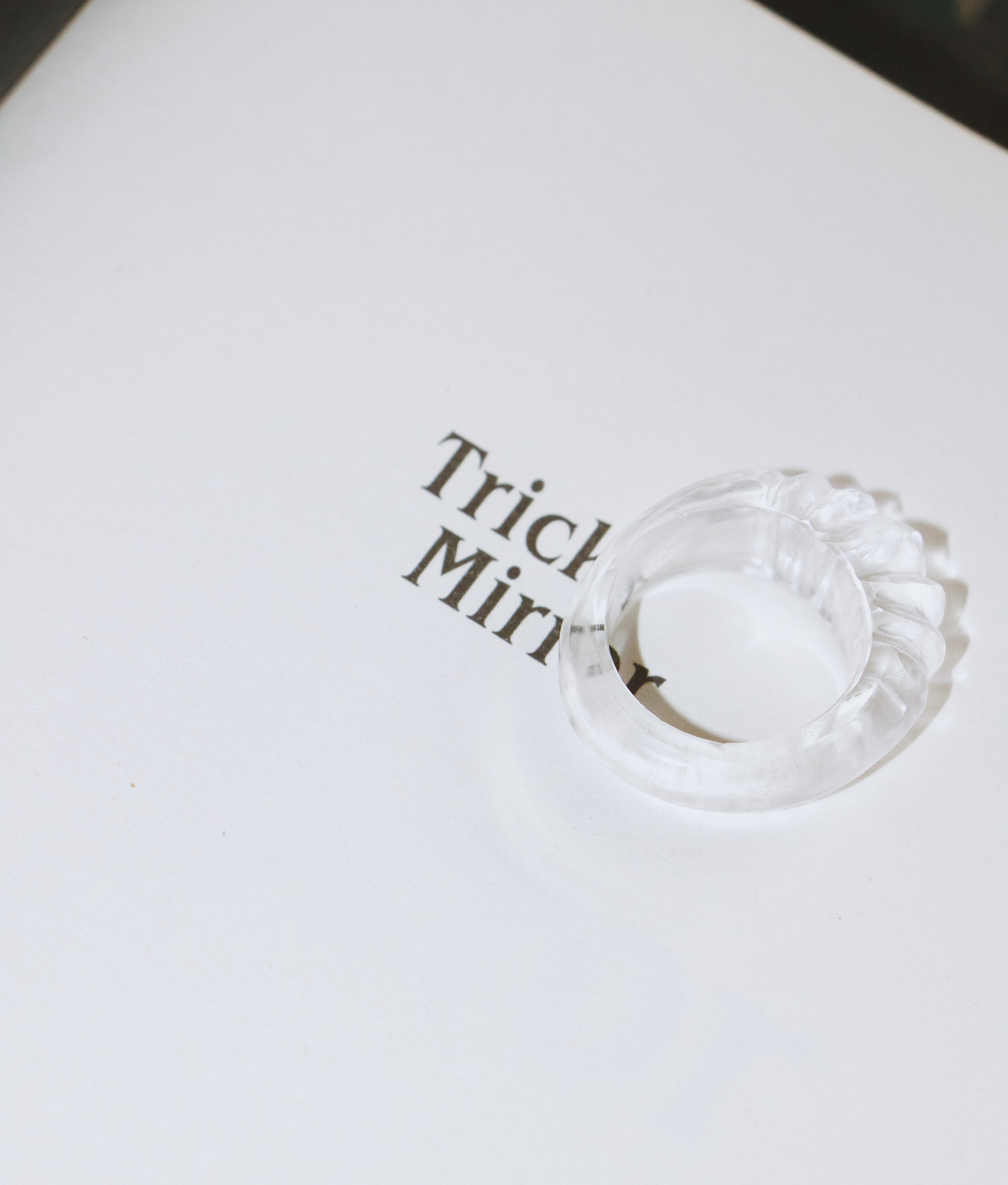
love the historical snippet of le roy soleil <3
I finally had the time to sit down and enjoy your writing! What a delight! You are gifted my friend. I always knew you had a gift with words and an eye for beauty. I just bought the Artist's Way. You had already recommended it to me, and for some reason I just forgot about it. I read The Creative Act by Rick Rubin, but I need to read it again. It's amazing. It's one of those books you have to keep going back over and over again. Thank you for sharing your reads and sources of inspirations and for being brave enough to put yourself out there.